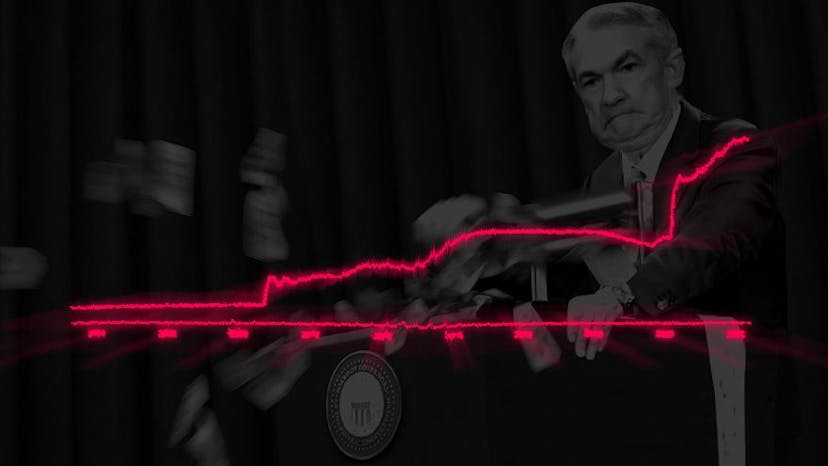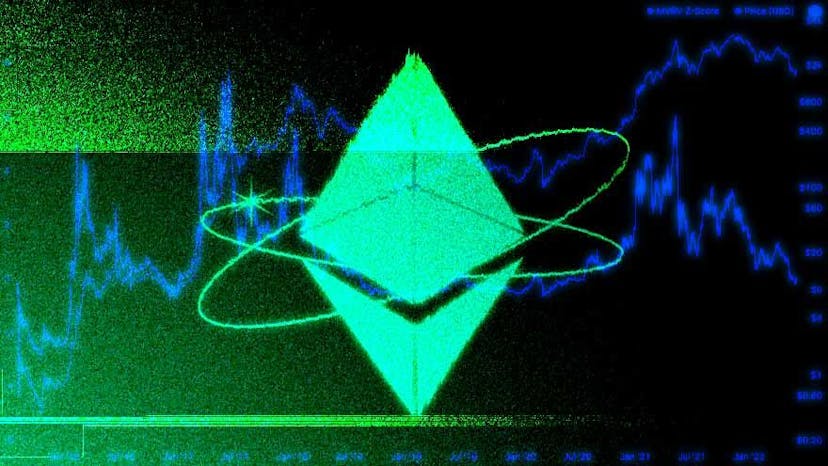Fed's Quantitative Tightening Program Poised to Whipsaw Crypto
QT Ends Loose Money Era and Augurs More Pressure For Token Values
By: Owen Fernau • Loading...
Markets
With crypto’s market cap already down $1T for the year, digital asset holders are hoping the bear market’s worst damage is done.
They may be out of luck, however, as the U.S. Federal Reserve began quantitative tightening (QT) on June 1, according to a press release by the central bank.
QT is a monetary policy tool with which the Fed decreases the amount of liquidity in the economy by allowing securities on its balance sheet to reach their maturity date. These securities are primarily Treasury bonds, whose debt is serviced by the U.S. government, and mortgage-backed securities.
The first tranche of debt won’t mature until June 15, according to Alfonso Peccatiello, the former head of fixed income portfolio management at ING Deutschland, so the actual effects of QT have yet to hit the US economy. Further, the rate of balance sheet reduction will double from $47.5B for the next three months, to $95B in September.
Reshaped the Markets
QT reverses the quantitative easing (QE) program that has reshaped the markets by flooding the economy with cash and Fed support, first during the global financial crash of 2008 and 2009, and then again during the Covid-19 pandemic in 2020 and 2021.
The program increased the Fed’s balance sheet by roughly $4.8T in the wake of the pandemic, according to a report by the Fed. That number constitutes over half of the Fed’s total balance sheet, which stands at $8.92T as of June 6, according to the Federal Reserve Economic Data platform.
Because crypto’s price movement has been tied to the amount of liquidity in the system, a further reduction in money supply by way of QT will probably be a new source of pressure on token valuations. The question is by how much?
Flurry of Metrics Show Signs of Potential Recovery for ETH

Flurry of Metrics Show Signs of Potential Recovery for ETH
Number of ETH Wallets at Highest Level in 12 Months
Economiser, a Twitter account billing itself as “examing DeFi and crypto from an econ angle,” suggested that QT’s effect may not be so dramatic. As evidence, Economiser referred The Defiant to research by the Fed equating the QT program to roughly a sustained 0.5% increase in interest rates in terms of its effect on the economy.
“I expect demand for crypto from the U.S. to reduce slightly over the next 12 months, however I don’t think demand will drop massively,” Economiser told The Defiant. The economist also said they believed that BTC and ETH wouldn’t be affected differently by QT.
Cost of Rising Debt
Economiser added that there is reason to be concerned with regard to demand for crypto in emerging markets. “A lot of emerging markets borrowed significant amounts in 2020 and 2021 to fund the pandemic response,” the economist said. “Now with increased interest rates, the cost of servicing that debt is rising substantially.” Economiser added that Sri Lanka already defaulted on their debt in May.
Others in the investment field aren’t as optimistic about QT. Ana Andrianova, a former investment banker and founder of Akropolis, a product which aims to provide simple access to yield-generating DeFi protocols, thinks QT could play a role in pushing the world into a serious economic downtown.
Retail Capital Inflows
“The impending recession will be unquestionably like nothing we have seen before,” Andrianova told The Defiant. “QT and a very real hyperinflation will strip the retail investors of the discretionary [cash] that fueled much of the 2020-2021 bull run.”
The banker-turned-DeFi founder added that crypto is significantly more sensitive to retail capital inflows than more traditional markets.
The effects of QT have yet to kick in. Bulls of course, hope the market has already priced in the information. Bears think we haven’t been hit yet. And of course, QT isn’t set in stone either — the Fed initiated a QT program in June 2017 though backed off earlier than expected in July 2019.
In similar fashion, the current QT program comes with an asterix from the Fed in their May announcement: “The Committee is prepared to adjust any of the details of its approach to reducing the size of the balance sheet in light of economic and financial developments.”
Advertisement
Get the best of The Defiant directly in your inbox 💌
Know what matters in Web3 with The Defiant Daily newsletter, every weekday
90k+ investors informed every day. Unsubscribe anytime.